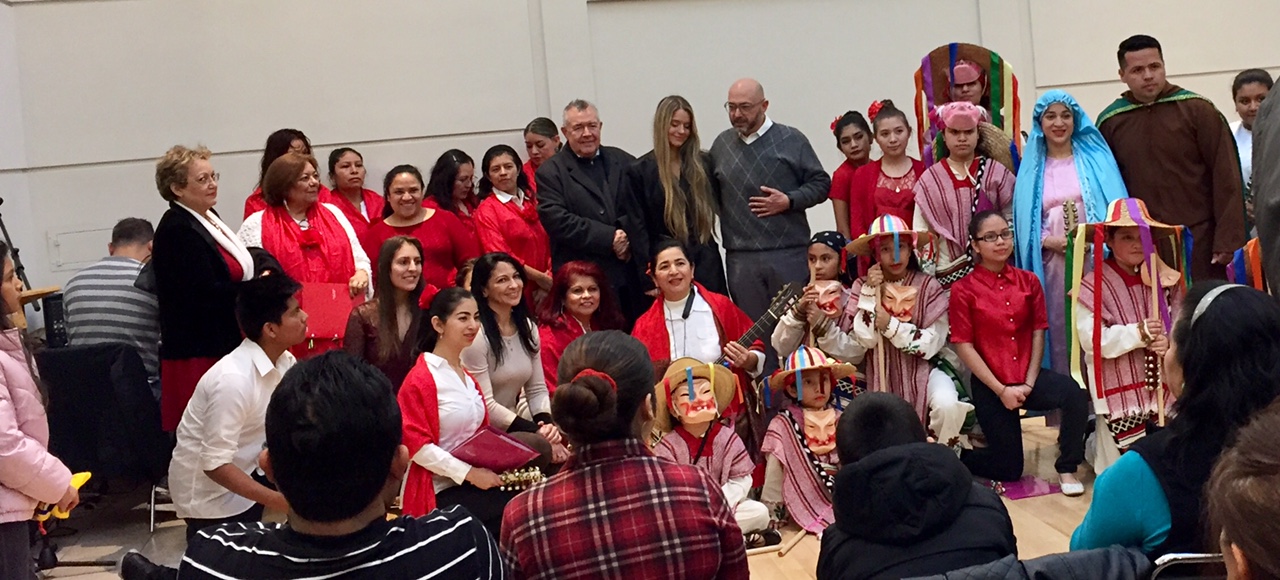Greetings! Sage here from CFM to explore our Future of Education Road Trip once again, this time in the context of the entire Southeast region with the Southeastern Museums Conference director Susan Perry, who was a great resource to us in the planning of our Road Trip and along the way. Susan was available via text through snow, rain and traffic as we made our way through the region and helped Nicole and me understand firsthand the importance of the complicated constellation of state, regional and topical museum associations that complement and collaborate with the work of AAM. We each have specific and necessary missions to better serve our museum communities– from the hyper-local to the national landscape– in concrete and complementary ways and we work the best in close partnership.
Sage Morgan-Hubbard (SMH): Thank you Susan for all of your help on our Road Trip and for agreeing to conduct this interview. As you know, our Road Trip was focused on the “Future of Education.” What do you see as trends in education and museums, especially in the Southeast?
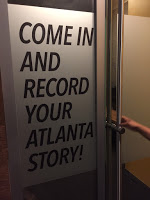
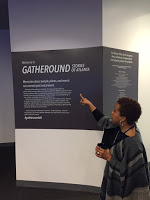 Susan Perry (SP): First of all I want to thank you for your road trip. I think it is proactive—that you care to come out and dispel the stereotypes of the Southeast and meet with museums face to face. That personal interaction is important, especially in the South. I come from a museum education background. I love that educators usually have local networks to collaborate with each other, such as in Georgia, they have a regular meetings of educators and share ideas. In terms of trends in education in museums, I tend to agree with Elizabeth Merritt’s forecast that education is moving towards relevancy with the real world. I have a liberal arts degree and I believe in them, but we see a trend in students wanting degrees that are not just broad knowledge based, but have relevancy in securing a real world job and employment. I see young people selecting more marketable majors in college in order for them to get a job. Museums are relating to their communities more directly. Museums are becoming community catalysts, a gathering place of community and viewed as community centers. The trend that I am seeing is museums marketing themselves as a vital places to have difficult discussions and be relevant to their communities. Museum education departments have been doing this work for a while, but it is just getting stronger. Education departments, such as at the Atlanta History Center where I have an office, have sustained relationships with schools that are beyond field trips. They conduct repeated visits from certain schools, and at the Atlanta History Center, the homeschool programs are hugely popular. For many different school-aged populations, the museum is an alternative classroom. Each community has a unique expression of this trend. The exhibit “Gatheround: Stories of Atlanta” at the Atlanta History Center curated by Dr. Calinda Lee that you saw when you visited, incorporated many diverse stories and interactions that students love. They even worked with StoryCorps to add stories and we see the visitor populations growing and changing because of programs like these.
Susan Perry (SP): First of all I want to thank you for your road trip. I think it is proactive—that you care to come out and dispel the stereotypes of the Southeast and meet with museums face to face. That personal interaction is important, especially in the South. I come from a museum education background. I love that educators usually have local networks to collaborate with each other, such as in Georgia, they have a regular meetings of educators and share ideas. In terms of trends in education in museums, I tend to agree with Elizabeth Merritt’s forecast that education is moving towards relevancy with the real world. I have a liberal arts degree and I believe in them, but we see a trend in students wanting degrees that are not just broad knowledge based, but have relevancy in securing a real world job and employment. I see young people selecting more marketable majors in college in order for them to get a job. Museums are relating to their communities more directly. Museums are becoming community catalysts, a gathering place of community and viewed as community centers. The trend that I am seeing is museums marketing themselves as a vital places to have difficult discussions and be relevant to their communities. Museum education departments have been doing this work for a while, but it is just getting stronger. Education departments, such as at the Atlanta History Center where I have an office, have sustained relationships with schools that are beyond field trips. They conduct repeated visits from certain schools, and at the Atlanta History Center, the homeschool programs are hugely popular. For many different school-aged populations, the museum is an alternative classroom. Each community has a unique expression of this trend. The exhibit “Gatheround: Stories of Atlanta” at the Atlanta History Center curated by Dr. Calinda Lee that you saw when you visited, incorporated many diverse stories and interactions that students love. They even worked with StoryCorps to add stories and we see the visitor populations growing and changing because of programs like these.
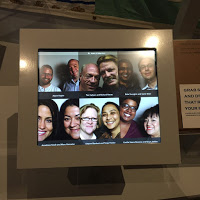
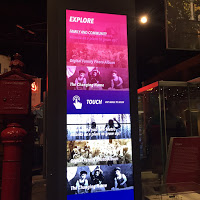
(Image captions: Dr. Calinda Lee, curator of “Gatheround: Stories of Atlanta”, interactive touch screen to experience stories, an interactive video of oral histories of LGBTQ families in Atlanta, and a StoryCorps booth located inside of the exhibit for visitors to tell stories and add them to the exhibit.)
Museums in the South are looking broader, beyond the collection and exhibits, and ask themselves, “How can I meet the needs of my community as a museum?” Another good example of this is the Levine Museum of the New South in Charlotte. Earlier this fall when there were riots in uptown Charlotte, many businesses were evacuated, but Levine decided to stay open and be a radical place for community members to process and talk. I see this as a necessary and important trend that extends far beyond education into all aspects of our museums.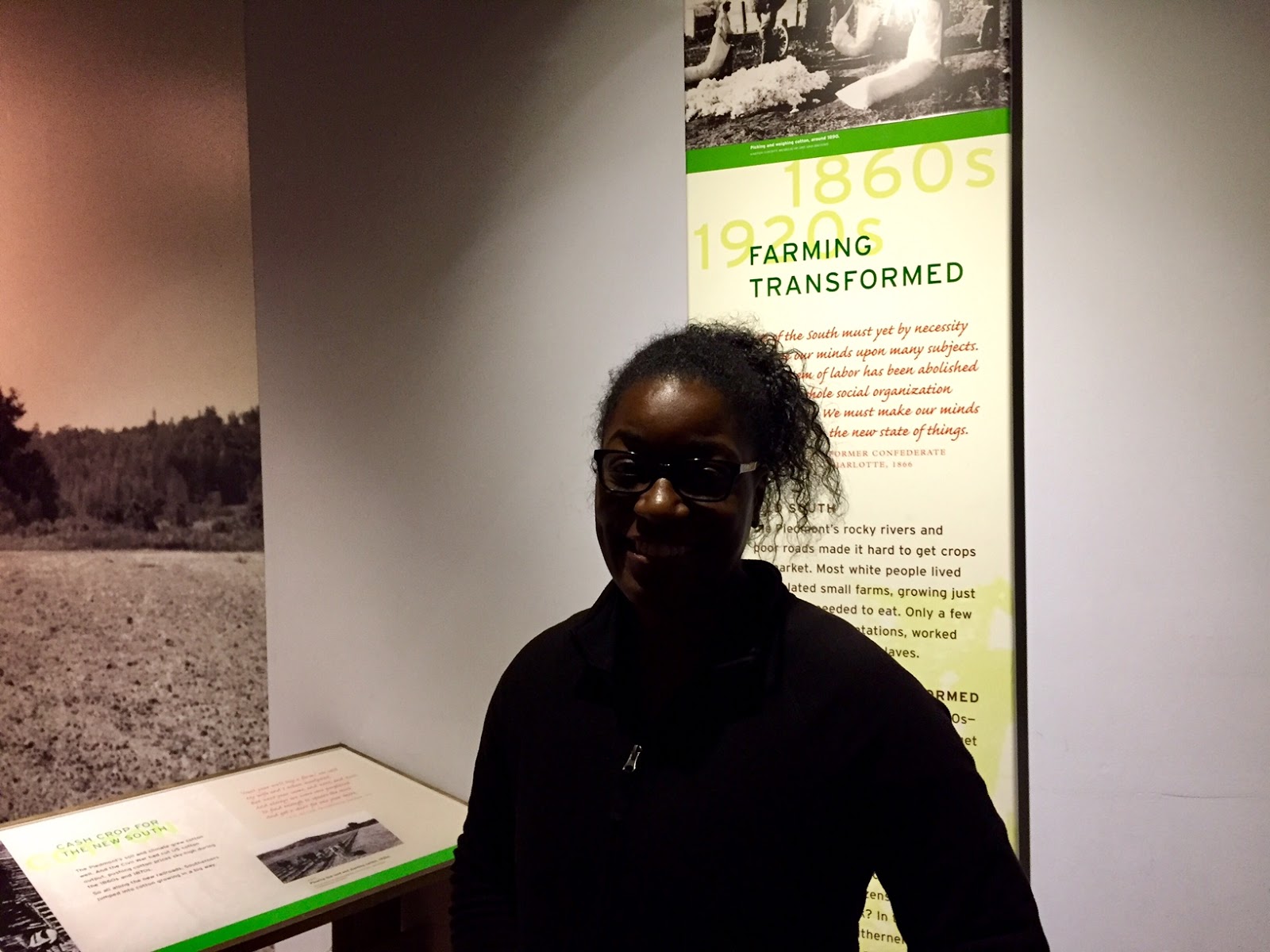
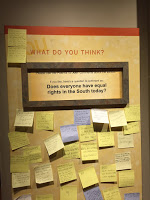
(Image captions: Kamille Bostick, VP of Education and Programs at the Levine Museum of the New South, instrumental in the Nuevolution exhibition, and Three Kings Day program pictured next to her. Below is an example of the many interactive talk-back boards through the museum)
SMH: Thank you. I am also curious about the relationship between museum work and labor that you see in the Southeast region. During our road trip, my colleague, Dr. Nicole Ivy, was able ask questions about the Future of Labor and we saw many points of intersection between education and labor in the Southeast.
SP: Yes, I see these as important issues and connected. Similar to the trend for relevancy, the entire museum community is looking to become more diverse and inclusive in staff, programs, and exhibits, both nationally and at the community level. Museums, especially in the Southeast need to reflect their own communities in hiring practices and staff. It is a challenge to know how to go about making these changes when there is often not a lot of turnover with staff, however it is encouraging to see more emerging museum professionals coming directly out of college and graduate school applying for museum jobs. This newer generation of museum professionals seem to be more diverse, not only racially, but also in their fields of study. Many of these students are coming from majors that are outside of museum studies, art history and history majors. Museums are slowly looking outside of traditional tracks for employees that have specific skill sets more than specific majors and this is increasing the diversity of the field. I am excited about Nicole Ivy’s new position as the director of Inclusion at AAM and I think this can help us as a field. I have concerns for the next generation of museum leadership, particularly for some of the smaller museums. Many of our museum professionals are getting older and don’t have plans in place for the next generation of museum leadership. This is why SEMC is developing a new program similar to, the Jekyll Island Management Institute (or JIMI) for mid-career (2-3 years in their career) professions to provide them with a broad overview on museum leadership. JIMI has been a great first step for us, but our next step is to develop more diverse leadership and to be more inclusive. We have made a lot of progress already and there is room to grow. We would love to include more specific professional development to provide assistance with the skill training that a director would need. SEMC as an organization wants to focus on our impact –what is our impact and our relevance? We see the intersections of inclusion and financial stability as part of our future impact.
SMH: Do you see the shifting demographics in the Southeast and new technology impacting these changes in hiring and education?
SMH: Do you have any specific examples of museums in the Southeast that do this well?
SP: Yes, a particular museum that is a technological jewel and surprise is the Earl Scruggs Center: Music and Stories in the American South in Shelby, NC. Earl Scruggs was a legendary five-string banjo master, a famous musician who went back to his community and converted the courthouse into a beautiful museum. You wouldn’t think it but the technology there is awesome! They have a big touch table where you can play different instruments. Technology is fun for kids, but it also has a lot of historical information mixed in so while the kids are playing with the touch table, they can throw an instrument, facts or information to their friend on the other side of the table, so they are simultaneously interacting, reading, learning and playing instruments at the same time. The wonderful thing about it is the layers of information that they are able to receive almost subconsciously. These types of fun touch tables immediately get a visitor interested and then they go deeper into the exhibition and get more information, hear more music and have many layers of experience. When they arrive, all visitors are given earphones to use during their visit and they can plug in and hear related music throughout the entire museum. Of course being a music-based museum, it has to have sound as an element, but I was surprised by how well they used it and what a special and unique sense of culture and space they were able to produce. You have to experience it for yourself. What is also special about the Earl Scruggs is the way that the museum has transformed the town. It has gone from being a little known small town to a destination place to go to and the restaurants and businesses have grown and flourished around the museum.
SMH: That sounds great! And what do you see as future of education in the Southeast?
SP: Well, that is hard to say. Schools and formal education systems are unique in each community; each city in the South is so specific. The district that I know the best is where I have lived in Charlotte, NC. My children went to public school there, and we are known as being the first school district to utilize bussing. We had some of the earliest integrated schools, so my children’s experience in schools is very different from more segregated communities. You can’t generalize or oversimplify the specific issues each community faces and what they need to improve their educational systems. What I can say is that my children were blessed to be raised in the art museum and Discovery Place, the children’s museum in Charlotte, because the city has such a special relationship with its museums. They also went to the Levine Museum of the New South. My children have had a diverse range of experiences growing up and learning through museums. They were able to learn more about the Latino communities around them through exhibitions, such as Nuevolution, which you saw on your trip. The Levine Museum was able to work very closely with the Latino community in Charlotte as well as with the Atlanta History Center and the Birmingham Civil Rights Institute. Through our SEMC network, we have possibilities to closely collaborate amongst our different communities. Nuevolution is an exhibit developed from the community. The partnership between three museums and three cities is very unique and special as it is able to travel. They tell both the differences and similarities of their communities. Each museum and city has different components to add from Charlotte, Atlanta and Birmingham with regard to technology, interactions, and post-notes visitor engagement . My children and I still think and talk about that exhibit and it is an indicator of the possibilities of collaboration in the Southeast.
SMH: And what do you see are some of the challenges of the Southeast? In our roundtable discussions in Charleston, SC and New Orleans, LA, we had some challenging conversations about race and segregation amongst other issues.
SP: I think it goes back to my first observation about the trends in museums. We are all trying to be sustainable and to do that these days as a museum it has to be relevant and vital to the community. It is critical now. To be relevant is the biggest challenge, financial stability is also a challenge, especially in smaller museums within smaller towns. Historic house museums are going through a revolution redefining themselves. Historic houses have to think in out of the box ways for their programming. With the legacy of Civil Rights in the Southeast, inclusion has been an issue for a long time and will continue to be, but it is hopeful to see museums that are trying to take a lead in being a positive place where people can come together and have good communication and dialogue as a community center.
SMH: Is there anything else that you would want to share?
SP: I think what keeps me in this field is that I’m always overwhelmed by the passion—people doing it for the love of it, passionate about their subject matter and it is encouraging to be around museum people. They treasure what is best within each community- they share their love and passion for their collections. Museums are no longer just storing and caring for the objects, but sharing them with communities. SEMC is unique in our friendliness. We have that southern hospitality. People have that feeling when they participate in our conference. We have generally 500-600 attendees at our conference, we have 1,600 members so almost half of them go to our conference. As a mid-sized conference people leave our conference as friends. They are sharing what no one else experiences besides those of us in the Southeast. The networking and relationship building are so important. As a regional association, the exchange allows for Southeastern professionals to meet people who understand what they do, exchange ideas, exhibits, etc. For many of our smaller museums, this is the only opportunity for professional training and networking. We found this to be especially true during our recent natural disasters. Climate change is another important trend in our region. When Albany, Georgia was hit by a tornado, a museum had to quickly move a collection. They were able to use these networks strategically to move their collection. This is no small trend. Water rising is going to affect the Southeast more than any other region. For example the entire state of Florida is surrounded by water. Hurricanes and tornados are happening far too often. We had Hugo in Charleston, Katrina in New Orleans, Matthew in NC.In a disaster, we cannot rely on technology. Without electricity or temperature control, we realize how unprepared we are. We need to be better prepared and support each other as a museum community.
SMH: Thank you for your time and I look forward to working with you more and having an Atlanta Roundtable discussion hopefully at the Atlanta History Center later this year.
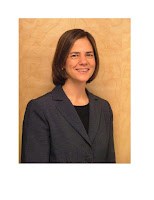
Bio: Susan Perry is the Executive Director of the Southeastern Museums Conference, a nonprofit membership organization that serves twelve states throughout the Southeast. She received a B.A. in Art and English from Agnes Scott College, a M.A. in English from University of North Carolina at Charlotte, and a M.F.A. in Drawing and Painting from California State University, Long Beach. She has over twenty years of non-profit management and arts administration experience. For five years, she served as the Grants Director of the Alabama Humanities Foundation and advised the development of public programs for the Southern Literary Trail. As the Adult Programs Coordinator at the Mint Museum of Art, Charlotte, N.C., she contributed to the IMLS Smart Connections and True Needs, True Partners: Museums and Schools Transforming Education grants and several North Carolina Arts Council grant projects. For the past twenty years, she has been an instructor of art history and fine art at numerous universities, most recently at Samford University. As a lecturer and conference speaker, she has conducted grant writing/fundraising workshops and served as an advisor on grant projects.
Elizabeth Merritt

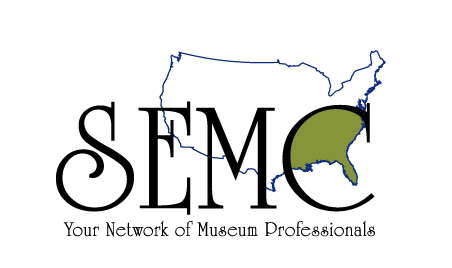

 Susan Perry (SP): First of all I want to thank you for your road trip. I think it is proactive—that you care to come out and dispel the stereotypes of the Southeast and meet with museums face to face. That personal interaction is important, especially in the South. I come from a museum education background. I love that educators usually have local networks to collaborate with each other, such as in Georgia, they have a regular meetings of educators and share ideas. In terms of trends in education in museums, I tend to agree with Elizabeth Merritt’s forecast that education is moving towards relevancy with the real world. I have a liberal arts degree and I believe in them, but we see a trend in students wanting degrees that are not just broad knowledge based, but have relevancy in securing a real world job and employment. I see young people selecting more marketable majors in college in order for them to get a job. Museums are relating to their communities more directly. Museums are becoming community catalysts, a gathering place of community and viewed as community centers. The trend that I am seeing is museums marketing themselves as a vital places to have difficult discussions and be relevant to their communities. Museum education departments have been doing this work for a while, but it is just getting stronger. Education departments, such as at the Atlanta History Center where I have an office, have sustained relationships with schools that are beyond field trips. They conduct repeated visits from certain schools, and at the Atlanta History Center, the homeschool programs are hugely popular. For many different school-aged populations, the museum is an alternative classroom. Each community has a unique expression of this trend. The exhibit “Gatheround: Stories of Atlanta” at the Atlanta History Center curated by Dr. Calinda Lee that you saw when you visited, incorporated many diverse stories and interactions that students love. They even worked with StoryCorps to add stories and we see the visitor populations growing and changing because of programs like these.
Susan Perry (SP): First of all I want to thank you for your road trip. I think it is proactive—that you care to come out and dispel the stereotypes of the Southeast and meet with museums face to face. That personal interaction is important, especially in the South. I come from a museum education background. I love that educators usually have local networks to collaborate with each other, such as in Georgia, they have a regular meetings of educators and share ideas. In terms of trends in education in museums, I tend to agree with Elizabeth Merritt’s forecast that education is moving towards relevancy with the real world. I have a liberal arts degree and I believe in them, but we see a trend in students wanting degrees that are not just broad knowledge based, but have relevancy in securing a real world job and employment. I see young people selecting more marketable majors in college in order for them to get a job. Museums are relating to their communities more directly. Museums are becoming community catalysts, a gathering place of community and viewed as community centers. The trend that I am seeing is museums marketing themselves as a vital places to have difficult discussions and be relevant to their communities. Museum education departments have been doing this work for a while, but it is just getting stronger. Education departments, such as at the Atlanta History Center where I have an office, have sustained relationships with schools that are beyond field trips. They conduct repeated visits from certain schools, and at the Atlanta History Center, the homeschool programs are hugely popular. For many different school-aged populations, the museum is an alternative classroom. Each community has a unique expression of this trend. The exhibit “Gatheround: Stories of Atlanta” at the Atlanta History Center curated by Dr. Calinda Lee that you saw when you visited, incorporated many diverse stories and interactions that students love. They even worked with StoryCorps to add stories and we see the visitor populations growing and changing because of programs like these.




